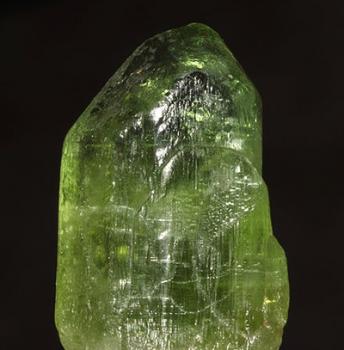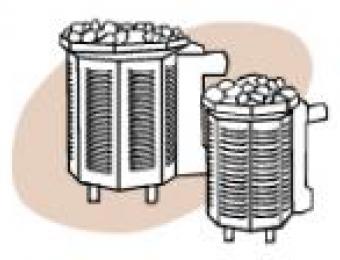
What type of stones should I use in my sauna?
The best stones for saunas are igneous, heavy and rough surfaced stones. Peridotite, olivine (which also has a soothing green colour) and vulcanite are all good choices for this, but granite and other igneous rocks can be used as well. Stone sizes should range from roughly half to twice the size of an orange, and it is a good idea to have a variety of sizes to make sure they're stacked nicely.
Sauna stones should be arranged with the largest at the bottom and smallest at the top, remembering to allow plenty of space for airflow between them. Don’t spread the stones too sparsely though - you want them to catch the water when you pour it on, not let it trickle down into the heater. The heavier the rocks you use, the longer they will retain the heat. Rough surfaces on your rocks help to disperse the steam more gently.
If you're choosing your own stones, avoid any that have been immersed in water for long periods of time. If the stones have absorbed any moisture, the high heat can turn it into steam inside the stone, which may make it shatter. the rocks in your sauna will eventually crack over time anyway, and should be replaced as necessary.
What sort of floor should I have in my sauna?
Proper flooring is very important in a sauna or steam room. The last thing you need is to fall over in a sauna that contains a heater filled with hot stones! The flooring material you use in your sauna or steam room should not only be non-slip, but must also be heat and moisture resistant. Duckboard has always been a popular option in traditional saunas, but this has more recently given way to moulded plastic, which is easier to clean and maintain, and is more resistant to moisture damage. Many companies offering this type of flooring sell it as panels which you can buy and fit to size.

Buckets and ladles
You may also want to give careful thought to the type of bucket and ladle you use. A wooden bucket is the traditional option and will most definitely fit the look, but needs proper care or it will warp and spring leaks very quickly. A wooden bucket should never be without some water in it while inside the sauna, or it will dry out and separate. Wood is a good choice otherwise though, as it is quite resistant to heat.
A metal bucket and ladle can be used too, but you should choose a powder coated bucket or a stainless steel bucket to prevent corrosion. Be aware that like any piece of metal in a sauna, a metal bucket will get hot fairly quickly so you should keep it on the floor at all times to prevent this.
Water and essential oils
Always use fresh, unchlorinated water on your heater. Chlorine in water drawn from a pool or spa will smell terrible, produce noxious vapours and corrode the heater. A variety of essential oils can change the experience too. Common oils include eucalyptus, pine, birch and other herbal extracts. Never pour the oil directly on the heater, as it will burn. Add it to the water instead and let it dilute, then ladle the water on the stones. Natural essential oils are generally favoured over artificial fragrance oils.
Clock, thermometer and hygrometer
Traditionalists will insist that the measure of a sauna session should be calculated in terms of the time it goes on for, and the temperature at which the sauna is set. For this reason, many saunas must contain a clock or a timer (traditionally an hourglass timer), and a decent thermometer. You may also wish to install a hygrometer for measuring relative humidity, if you're keen to keep track of the atmosphere in your sauna. The main thing to remember is that everything in your sauna must be heat and moisture resistant, and that it shouldn't have exposed metal parts. Specialist sauna accessories are almost always made of wood.




